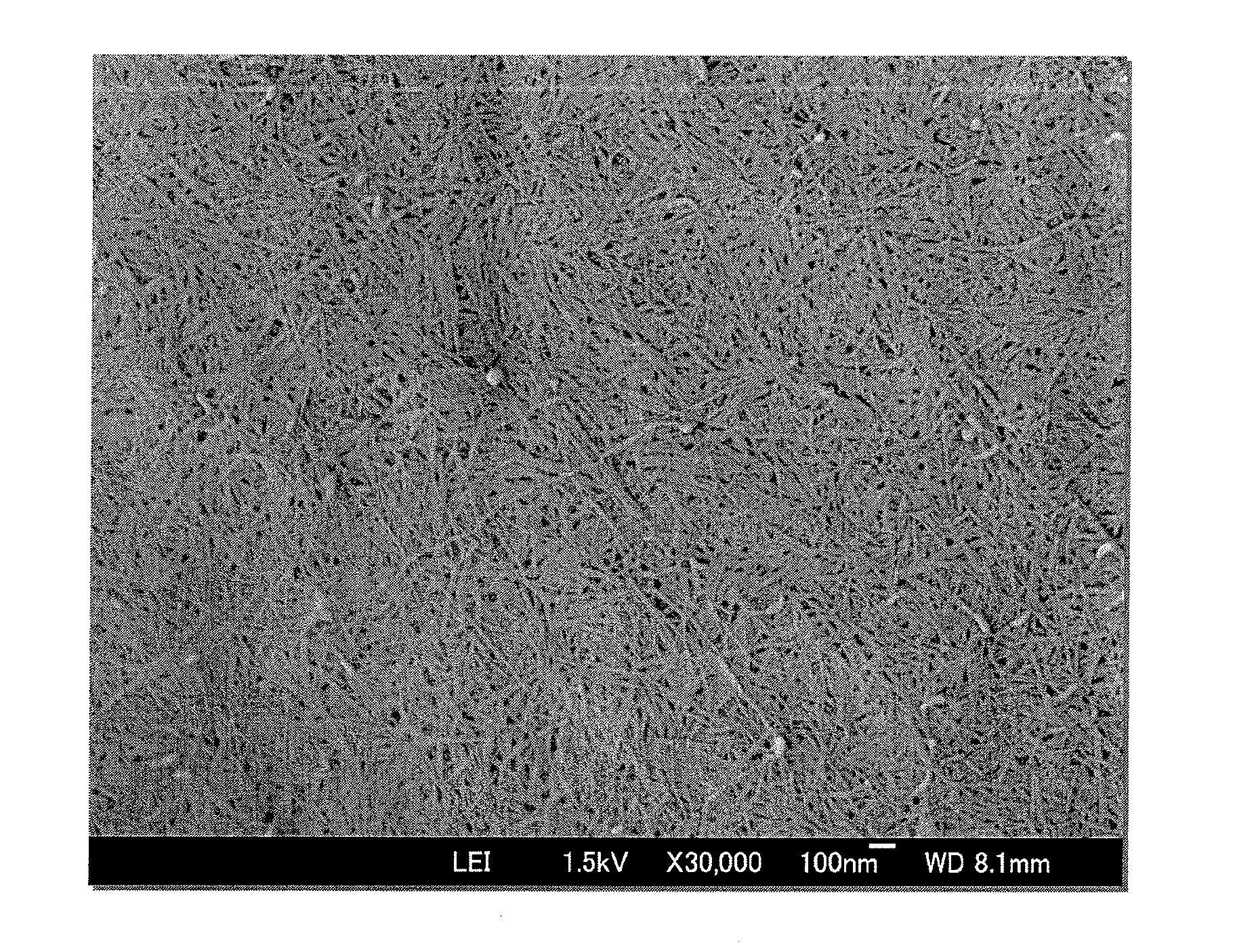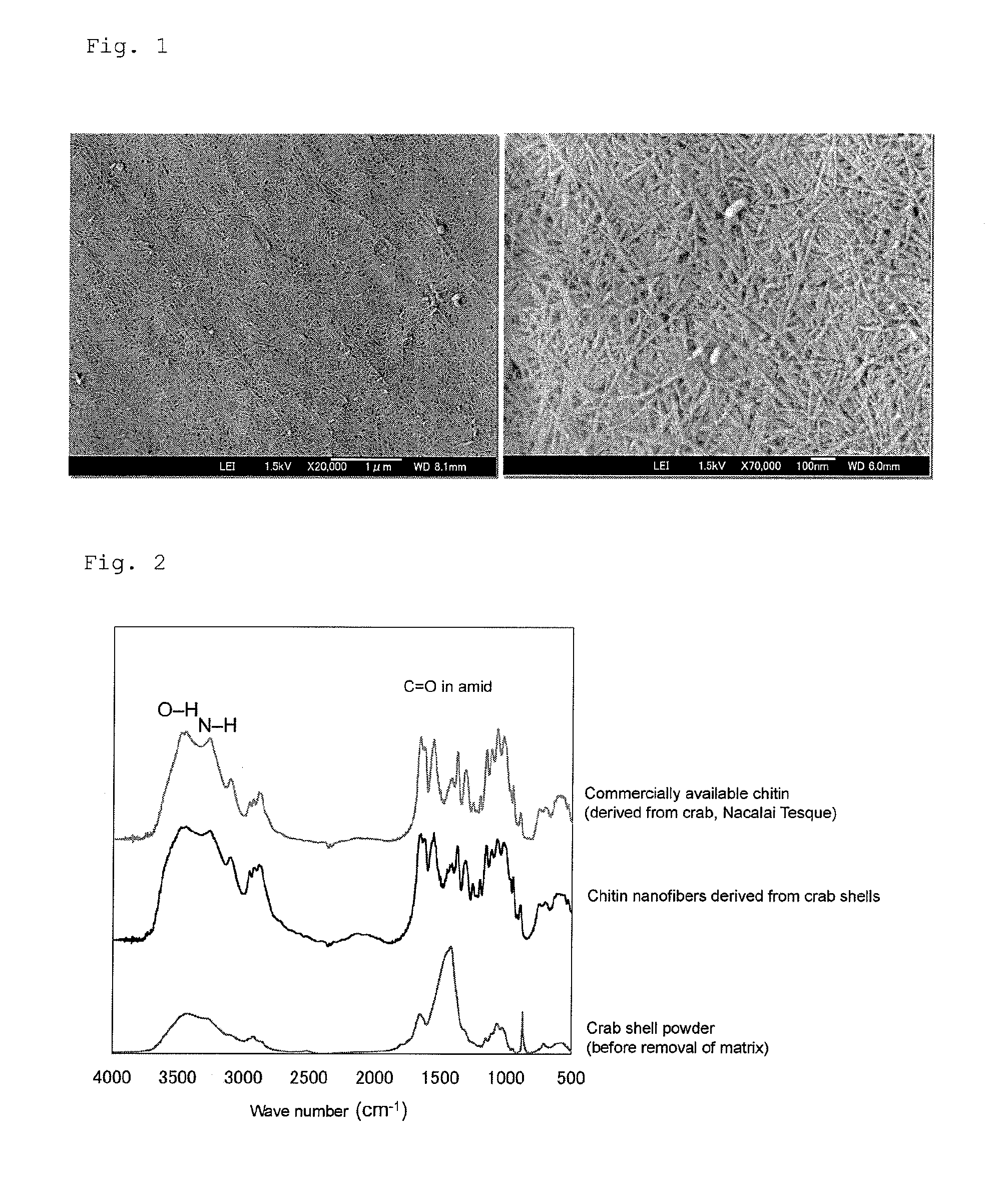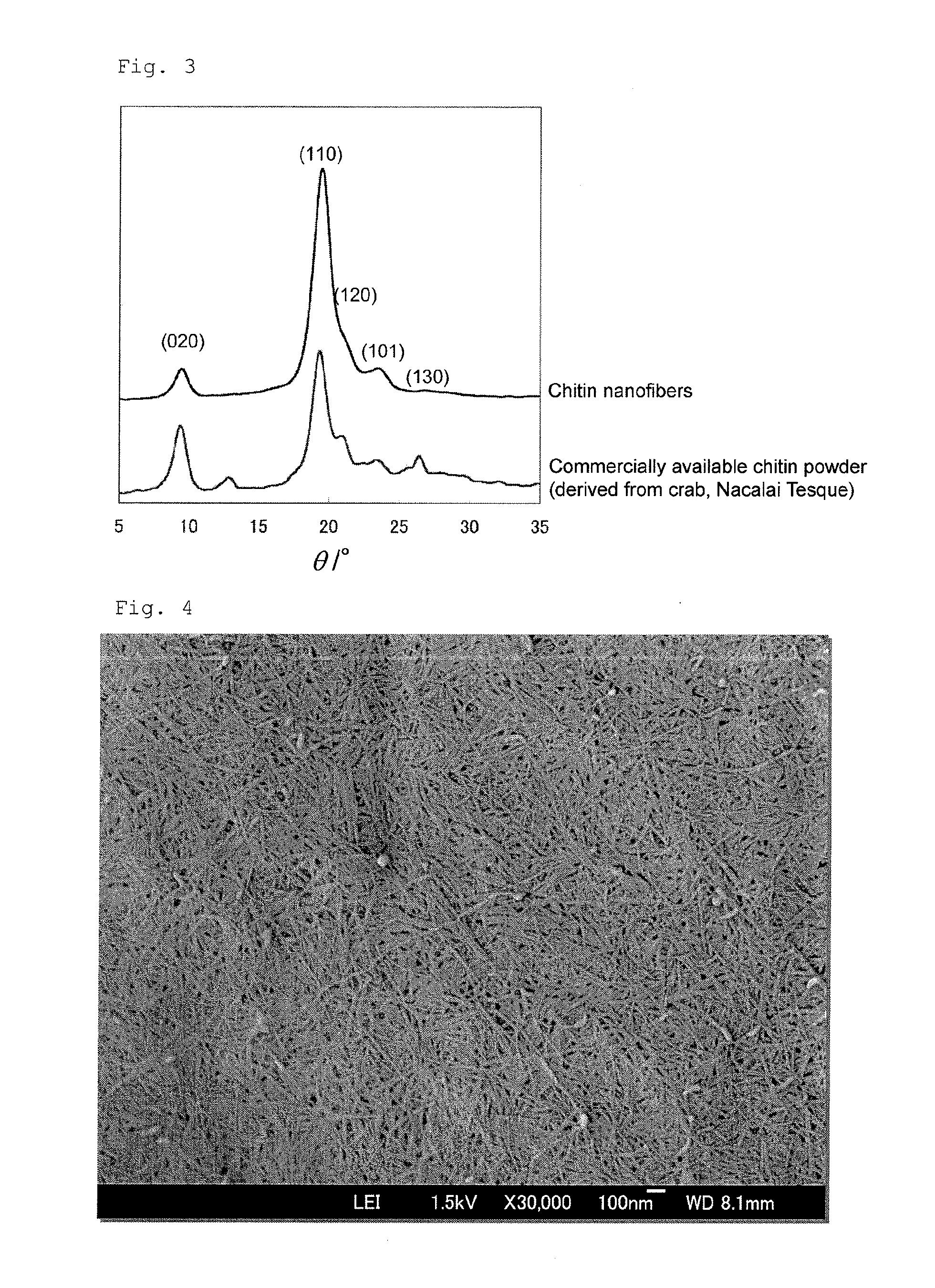Method for producing chitin nanofibers, composite material and coating composition each containing chitin nanofibers, and method for producing chitosan nanofibers, composite material and coating composition each containing chitosan nanofibers
a technology of chitin nanofibers and nanofibers, which is applied in the direction of transportation and packaging, yarn, and coatings, can solve the problems of large diameter of fibers obtained by electrospinning, inability to completely fibrillize fibers, and inability to meet the requirements of mass production, so as to maintain light transmittance and flexibility, improve the effect of crystallinity and physical properties
- Summary
- Abstract
- Description
- Claims
- Application Information
AI Technical Summary
Benefits of technology
Problems solved by technology
Method used
Image
Examples
example 1
Production of (1) of Chitin Nanofibers from Prawn Shells
[0052]Dried prawn shells (produced in Canada, purchased from Kawai Hiryo, 100 g) were added to an aqueous 5% KOH solution and a protein in prawn shells was removed by refluxing for 6 hours. The treated prawn shells were filtered and then well washed with water until neutral. The prawn shells were stirred in an aqueous 7% HCl solution at room temperature for 2 days to remove an ash component in the prawn shells. Again, the prawn shells were filtered and well washed with water until neutral. The treated prawn shells were added to a 0.3 M sodium acetate buffer solution of 1.7% NaClO2 and a pigment component contained in the prawn shells was removed by stirring at 80° C. for 6 hours. Again, the prawn shells were filtered and well washed with water until neutral. The prawn shells were dispersed in water and the obtained dispersion was crushed by a domestic mixer and the pH was adjusted in a range of 3 to 4 by adding acetic acid, fol...
example 2
Production of (2) of Chitin Nanofibers from Crab Shells
[0054]Dried crab shells (produced in Canada, purchased from Kawai Hiryo, 100 g) were added to an aqueous 5% KOH solution and a protein in crab shells was removed by refluxing for 6 hours. The treated crab shells were filtered and then well washed with water until neutral. The crab shells were stirred in an aqueous 7% HCl solution at room temperature for 2 days to remove an ash component in the crab shells. Again, the prawn shells were filtered and well washed with water until neutral. The crab shells were added to an aqueous 5% KOH solution and a protein in the crab shells was removed by refluxing for 2 days. The treated crab shells were added to a 0.3 M sodium acetate buffer solution of 1.7% NaClO2 and a pigment component contained in the crab shells was removed by stirring at 80° C. for 6 hours. Again, the crab shells were filtered and well washed with water until neutral. The crab shells were dispersed in water and the obtain...
example 3
Production of Chitin Nanofibers from Prawn Shells
[0055]Shells (10 g) of fresh black tiger prawns were added to an aqueous 5% KOH solution and a protein in prawn shells was removed by refluxing for 6 hours. The treated prawn shells were filtered and then well washed with water until neutral. The prawn shells were stirred in an aqueous 7% HCl solution at room temperature for 2 days to remove an ash component in the prawn shells. Again, the prawn shells were filtered and well washed with water until neutral. The treated prawn shells were added to a 0.3 M sodium acetate buffer solution of 1.7% NaClO2 and a pigment component contained in the prawn shells was removed by stirring at 80° C. for 6 hours. Again, the prawn shells were filtered and well washed with water until neutral. The prawn shells were dispersed in water and the obtained dispersion was crushed by a domestic mixer, and then the prawn shells were fibrillized into chitin nanofibers by a stone mill type triturating machine (Su...
PUM
| Property | Measurement | Unit |
|---|---|---|
| width | aaaaa | aaaaa |
| length | aaaaa | aaaaa |
| width | aaaaa | aaaaa |
Abstract
Description
Claims
Application Information
 Login to View More
Login to View More - R&D
- Intellectual Property
- Life Sciences
- Materials
- Tech Scout
- Unparalleled Data Quality
- Higher Quality Content
- 60% Fewer Hallucinations
Browse by: Latest US Patents, China's latest patents, Technical Efficacy Thesaurus, Application Domain, Technology Topic, Popular Technical Reports.
© 2025 PatSnap. All rights reserved.Legal|Privacy policy|Modern Slavery Act Transparency Statement|Sitemap|About US| Contact US: help@patsnap.com



